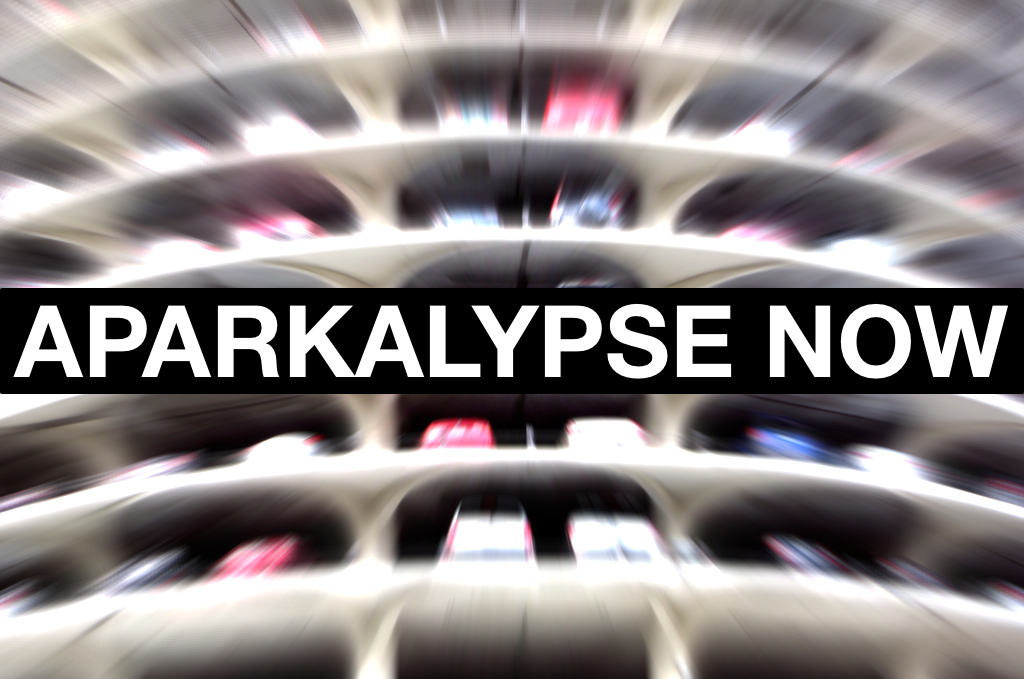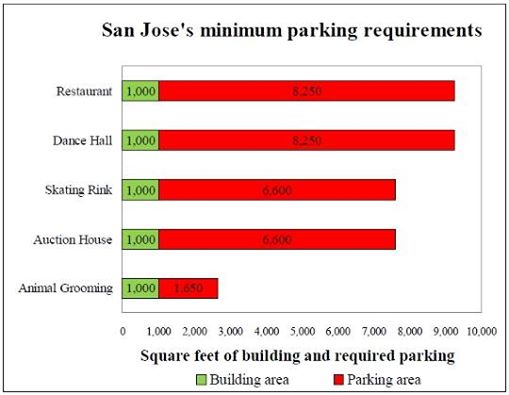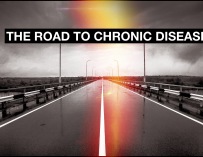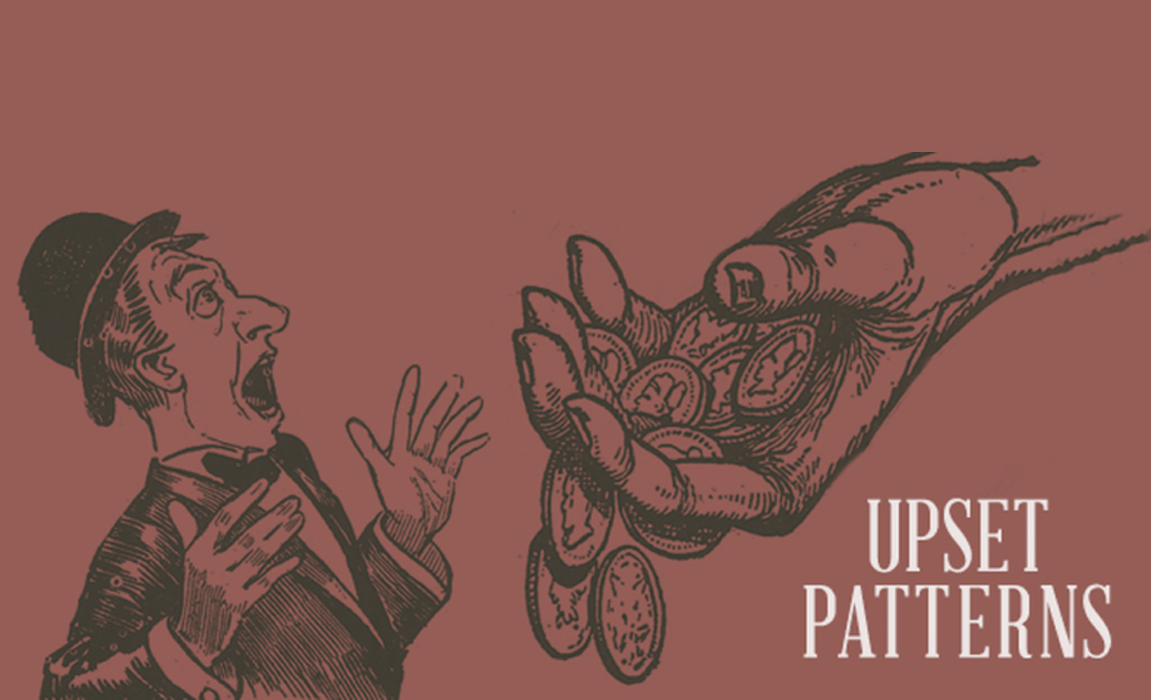Aparkalypse Now: The Economics of Parking
Imagine your town decides to mandate that all ice cream is free or very cheap. Soon, lines are out the door for people wanting to get cheap ice cream. Sure, people can get similar desserts, but they’d have to pay full price. In order to take care of these long lines, the town decides to mandate that every store must provide free or very cheap ice cream. This might sound silly but it’s exactly how cities deal with parking. Cities price street parking, or “curb parking,” very cheaply and then deal with the excess demand by requiring businesses and residences to have off-street parking. The costs of this distortion of land use may not be immediately obvious but they are significant financially, environmentally, and with regards to time.
Land: A Limited Resource
The fundamental problem of economics is finding out how to use the scarce resources we have on Earth in the best way possible. In the case of parking, land is a limited resource with many alternative uses. A typical parking space is around 330 square feet, not including aisles in parking garages and parking lots. 330 square feet is no insignificant amount of space, especially in dense cities. With other resources, we can think of prices as a “signal wrapped in an incentive” that coordinate resources in an economy. A free parking spot in New York City is giving away some of the most valuable land on Earth and completely ignoring the price system as a means for allocation. Most cities, due to history and the political inertia of voters being used to free parking, charge too little for curb side parking. When the price of a resource is lower than what the market would otherwise dictate, there is a shortage. If ice cream were close to free, people would want to consume more of it than was available. The land used for parking is no exception. To get rid of this shortage, public policy has been set mandating more off-street parking.
In the United States, the number of spots required for off-street parking is largely arbitrary. Consider the following graph showing how San Jose mandates parking space depending on the type of establishment. When pressed to come up with a reason for where they get the numbers, public officials usually claim ignorance or just say it’s how it’s always been.
Some other examples of requirements:
- 1 space per 10 nuns for a nunnery
- 1.5 spaces per fuel nozzle for a gas station
- 1 space per 2,500 gallons of water for a swimming pool
- 1 space per tennis player for a tennis court
- 3 spaces per beautician for beauty shop
It should be noted that these numbers are created from little data-driven research on efficient land use. One study surveyed 49 cities in the San Francisco Bay Area and found parking required for hospitals ranged between 29 and 1,682 spaces. The differences were uncorrelated to the corresponding cities’ population levels or densities. Why should we allocate land like this when we’d never allocate any other resource with such arbitrary mandates?
The Cost of Cheap Parking
Measuring the costs of this distortion can be hard to wrap one’s head around. The only obvious price in the case of free/cheap parking is the price of the parking spot to the driver. Because of this, the costs to sub-optimally priced parking are hidden and diffused across the entire population. Mark Delucchi at University of California – Davis estimates drivers pay between 1-4% of the actual costs of off-street parking. He estimates the annual capital and operating costs of off-street parking in the US to be between $79B and $226B in 2002. Remember that the cost of parking is not only the land used but also the maintenance for the spaces. As a comparison, the US spent $231 billion on medicare the same year. Because drivers pay so little of this, it is essentially a pure subsidy. A gas tax between $1.27 and $3.74 per gallon in 1991 dollars would have to be enacted to offset the subsidy for off-street parking.
But how do the costs of this subsidy manifest themselves? One evident symptom is the sprawl it creates. Any land used for parking is land that cannot be used for residential or business purposes. So if a city block could fit 5 shops in a world with no parking, but a city requires half the block to effectively be used for parking spaces, two blocks are now needed to fit those same 5 shops. Multiply this effect over every different kind of establishment and you can picture how much it spreads everything out.
When one considers the cost of driving a car to a destination versus other forms of transport, many costs add up to create the total cost – fuel, automobile insurance, the car purchase itself, parking etc. By reducing a drivers’ cost of vehicle travel, we are distorting an individual’s travel choices towards cars over other forms of transportation. We are ok to drive more because it’s cheaper than the actual cost of the journey. Off-street parking requirements have existed since the middle of the twentieth century so our habits have adopted accordingly. This sprawl has a spiraling effect and the car dependence is a self-fulfilling prophecy – parking requirements increase mobility by car, but the sprawl decreases mobility by bike, foot, or public transit.
Off-street parking requirements also have the unfortunate effect of reducing the amount of affordable housing. Most municipalities require a certain number of parking spaces based on how many residents will be in the building. This number does not change depending on the demographics of the residents. So if your residents are all poor and don’t have enough money to buy cars, you still need to devote part of your property to parking spaces. This means parking spots for people that don’t own cars and less space devoted to actual residences. A lower supply of housing means higher prices.
These requirements also have a second effect of distorting incentives to build affordable housing in the first place. If the city requires you to include x number of spots per resident, wouldn’t you be more inclined to build bigger tenancies that fit fewer tenants so you have to devote less land to parking? Bigger tenancies with fewer tenants means residencies that are more expensive and out of reach to low-income individuals. Oakland had no parking requirements until 1961. Afterwards, housing density went down 30% (sprawl) and construction costs went up 18% (decreased housing affordability).
Businesses also have distorted incentives in how they build. For a new building, a business can decide its use and then fulfill parking requirements accordingly. For an old building, a business needs to use the parking available as a limitation on its possible uses. If the number of spots wouldn’t satisfy the requirements for your nunnery, swimming pool, or beauty parlor, you need to build elsewhere. This means lots of vacant buildings remain unfilled because of the limited flexibility. It also incentivizes demolition and new development rather than using existing buildings.
Perhaps the most apparent cost is one we’re all accustomed to when trying to find a parking spot – “cruising.” Cruising refers to that tedious amount of time you spend circling the block around your destination hoping someone will leave their spot and you can swoop in. Since the cheap cost of curbside parking has created a shortage of spots, it’s only natural to cruise around until you find one that’s available. Some drivers will pay for lot parking, but why would you if a free spot is just around the corner? As George Costanza said, “It’s like going to a prostitute. Why should I pay for something when, if I apply myself, I can get it for free?” Cruising causes congestion that creates pollution and wastes time and energy. Research estimates that around 30% of cars in congested traffic are cars cruising and up to 45% in Brooklyn. If the line is too long at that free ice cream place, you’re gonna keep scoping out nearby places until you find one that’s available.
The Solution
In order to use land most efficiently, it only makes sense to make parking as expensive as it actually costs. This means having parking be priced according to forces relating to its supply and demand and not arbitrary regulations. Cheap parking enforces inefficient land use in urban sprawl, causes residential and business rents to increase, decreases the amount of affordable housing, and increasing pollution through cruising and the increased transportation time from increased sprawl. This doesn’t mean getting rid of parking altogether. It just means that the price of a car journey should more closely reflect its true cost.
The “right price” for curbside parking has been defined by economist Donald Shoup at the University of California – San Diego as the lowest price that ensures a 15% vacancy rate for a given area. Technology is available that can change this price based on fluctuating demand. Certain neighborhoods in cities like San Francisco and San Diego have effectively utilized this technology. A 15% vacancy rate means just enough cars can park without having an unnecessary amount of cruising.
Businesses naturally will be afraid this increase in price will scare away customers. But remember that the status quo of underpriced parking scares away customers too. Higher prices could incentivize carpooling, since the higher price of parking can be diffused across a handful of passengers. Businesses can also be convinced to embrace this increased price by having the parking revenue be re-invested in the respective business districts. Old Pasadena, a formerly skeezy neighborhood in LA, embraced right price parking and started using the money for district improvement efforts and eventually became a popular entertainment/shopping district. Austin does something similar, investing in trees and sidewalk upkeep with the revenue it gets near the University of Texas campus. In both instances the businesses, though perhaps initially skeptical, have embraced right price parking.
Water flows in the path of the least resistance, and it could be that parkers go from the spots of right price to residential neighborhoods with cheaper parking. So what’s the best way to counter-act this problem? Resident-only parking permits tend to over-compensate for this problem by creating an artificial scarcity – many of the spots go unused throughout the day as residents go to work or run errands. Instead, Shoup recommends a scheme where residents and guests park for free in their neighborhood but can charge parkers that want to use their designated spot. Remember all those unused parking spots in the housing for low-income individuals? Why not allow them to rent out their spots to people from other neighborhoods? Otherwise, the land goes completely unused. Cities like Boulder, Aspen, and Santa Cruz have successfully enacted schemes like Shoup’s to efficiently allocate residential parking spaces.
The Endgame
It can be hard to imagine paying more for parking in our given city landscapes. Remember that our cities have developed based on distorted incentives that increase sprawl and devote unnecessary land use to parking. Once parking is priced correctly and parking requirements are removed, land previously used for parking can be devoted to more valuable uses. Cities will slowly become denser and the higher price for parking won’t be as unavoidable as one may think.
The status quo of a car-dependent urban lifestyle does have its perks – cars allow one to carry large items, avoid adverse weather than encountered by biking or waiting at a bus stop, and often gets a traveler quickly from one point to another. But the price of a car journey needs to closer reflect the true cost. An ice cream-dependent urban lifestyle also has its perks – but we can spend all that milk, sugar, labor, and land on better resources.
To hear the ideas of this article presented in podcast form, check out episode 10 of Upset Patterns (iTunes | PodBean). This article draws heavily from Donald Shoup’s 2011 book “The High Cost of Free Parking.“
























Related Articles